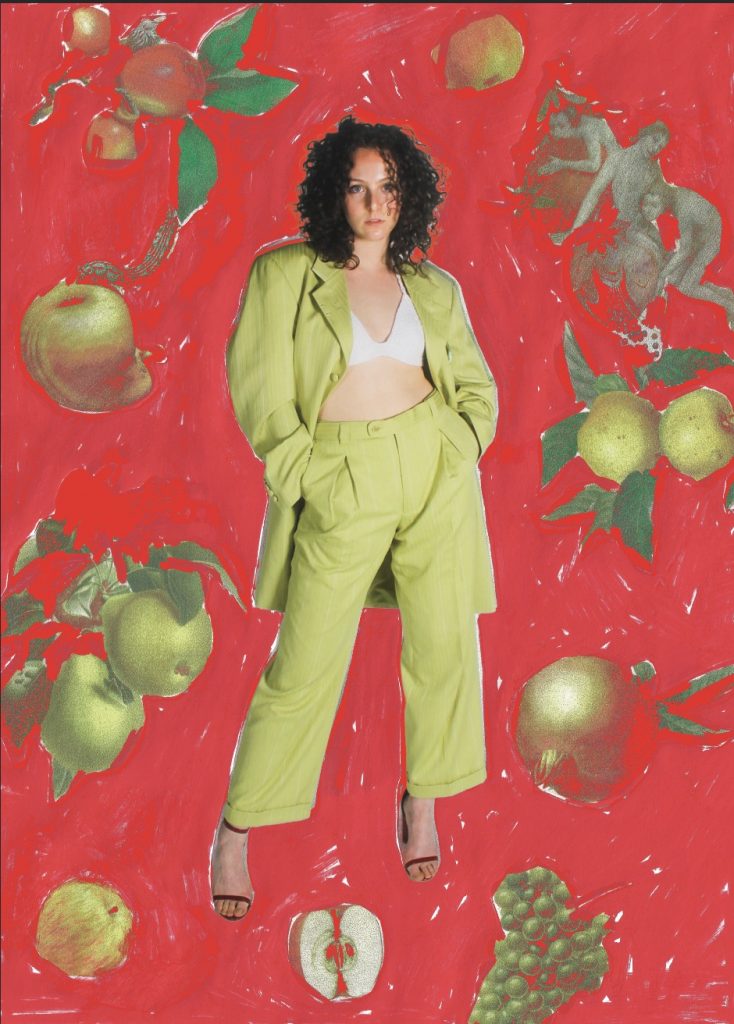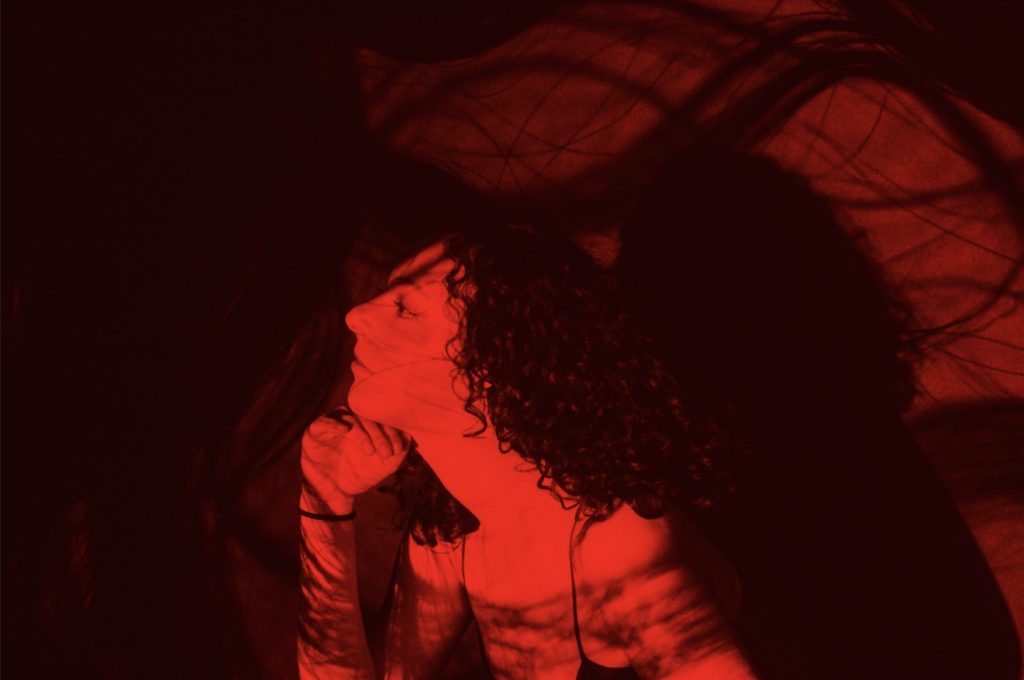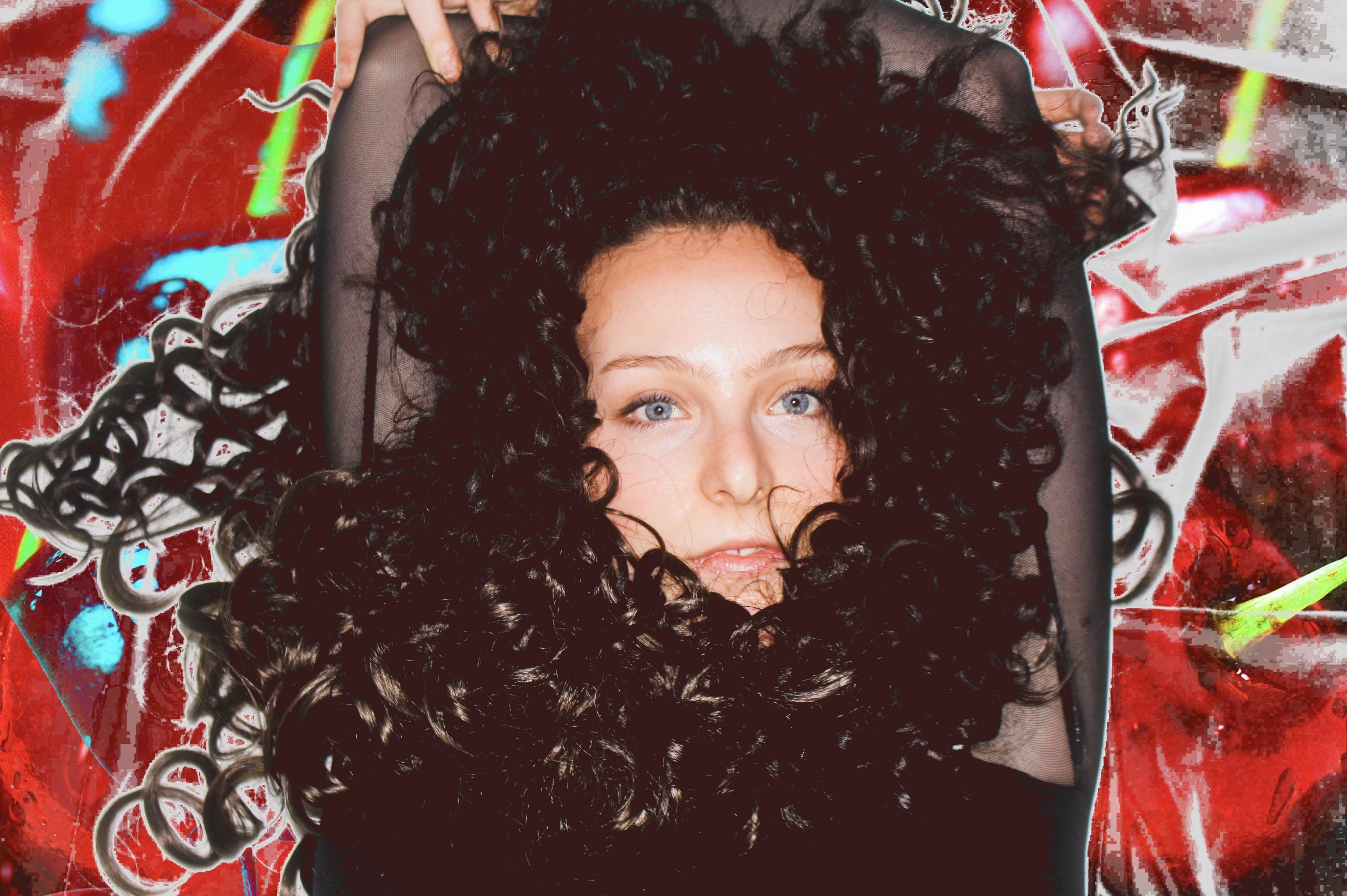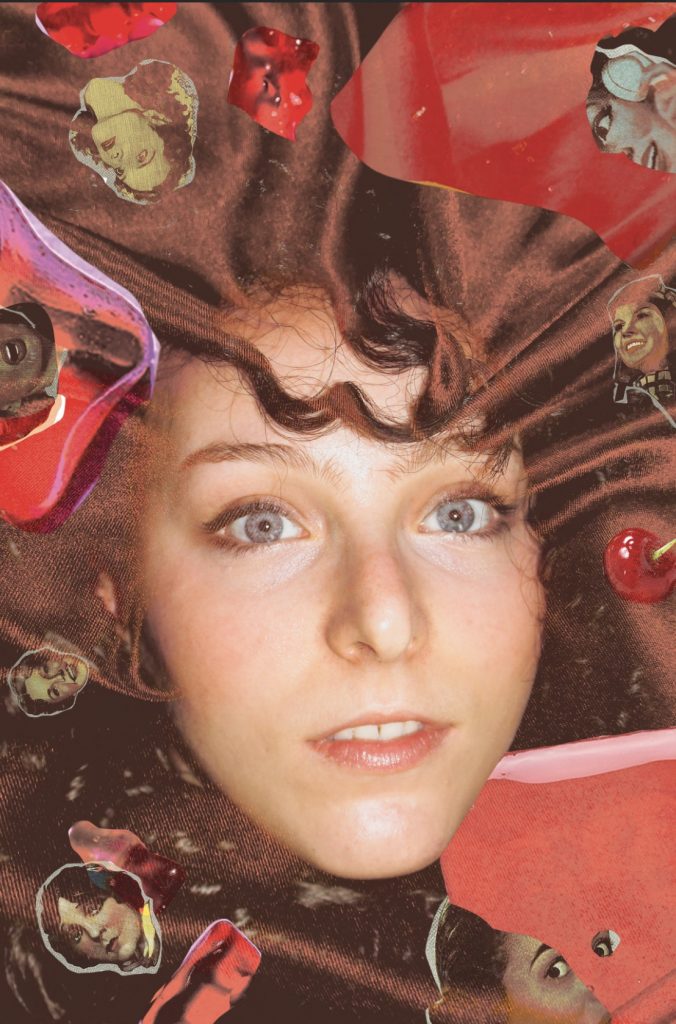Gavi Weitzman, senior in the Sam Fox School of Design and Visual Arts at Washington University in St. Louis, never expected art to turn into a philosophical exploration of her own identity and the way that she thought about the world.
In adolescence, Gavi was encouraged to draw. She participated in amateur art programs and scribbled cartoon images across blank pages, but it was always “just drawing. It was never about representing larger issues.” All of that changed after her sophomore year of college when she was assigned the most daunting and exciting task: explore what you’re interested in. At the time, she was taking classes at the intersection of feminism and art, and, inspired by the way artists explore identity through their work, proceeded to do as many have done before her and draw inspiration from her own life to make larger social commentaries.

Growing up in a Modern Orthodox Jewish community, themes of modest dress were instilled in the artist from a young age. In Judaism, modesty signifies dignity. And while she appreciated the freedom of that accompanied having all of her friends dressed in a uniform of t-shirts and flowy skirts at summer camp, careless of the pressures of modern trends and exposing their bodies, she did not appreciate the limiting aspects of such a practice. Judaism was and is a large part of Gavi’s identity; however, it presented her with conflicting opinions about her own body and gender.
Blessed are you G-d for not making me a woman – a blessing recited by men during their morning prayer – gives Gavi pause: Why are men thanking G-d for not making them women? What does that mean about her as a woman? As a Jewish woman?
Gavi was compelled to explore through art the intricacies of the perspectives she felt Judaism encouraged, including the mixed messages she received as a young woman regarding her body and role in her community. Orthodoxy had always told Gavi that women were to be respected and dignified, yet men were thanking God every day for not being born a woman. Orthodoxy had always told Gavi that modesty comes in many different forms, yet the only way she had ever seen it enforced was through how long her skirt was or how many inches were visible between her collar and her neck. Gavi says of her motivations, “I wanted to verbalize my turmoil and frustration. It was a way for me to make a statement: my art was speaking to other Jewish women, but also to Jewish men.”
The artist experimented with different mediums. She recreated the phrase, Shelo Asani Isha, For not making me a woman, out of hair, yarn, and candles. She painted it on her countertops with concealer, wrote it across her stomach, spelled it out in tampons. She became interested in the traditionally male religious signifiers such of kippot – head coverings – and tzitzit – ritual fringes – photographing them on an empty chair. “I feel such a strong connection to them, but they’re not for me,” Gavi said. She used this discomfort to drive her art, learning how to tie her own fringes and fashioning them into a crochet white bra and thong. She wore the garments beneath her clothes on Yom Kippur, a high holiday dedicated to repentance and forgiveness for one’s sins. It was a secret between her and God, a celebration of women in Orthodox Judaism.

In her triptych titled שצשני אשח (for making me a woman), Gavi further explores the facets of a Jewish woman’s identity and, as the title suggests, subverts the blessing that men say every morning in prayer: . In the first, the artist dons traditionally male clothing and ritual signifiers, overlaying the previous with a page from the Talmud. In the second, she wears a religious hair covering for women, a sheitel, and holds a baby in her arms. In Judaism, hair covering is yet another traditional form of modesty, and covered hair is a symbol of an adult woman doing what Jewish law expects of her: raising a family. Locks of human hair add another depth to this piece as Gavi once again lays claim to that which is traditionally relegated to the male realm. In the third, Gavi wears a multi-colored, studded dress with one strap hanging off the shoulder. Her hair is curly, uninhibited, and she looks directly at the camera. Marks left by lip-gloss laden lips further adorn the piece. In her triptych, Gavi asserts that the life of a young, religious Jewish woman is inherently full of dissonance – celebrating one’s body while covering it, being proud to be a woman even though others are grateful not to be, and loving Judaism while also being excluded from many of its tenets. The triptych’s title is a subversion of the blessing that men say every morning (for not making me a woman).
Orthodoxy, for Gavi, is a balancing act. She believes that many women live in this uncertain space, forced to lie somewhere in between blending in and standing out, with many aspects of the religion kept just out of reach. Through her art, Gavi commands control of her Judaism, femininity and identity, creating that which works for her and fits within her worldview. She uses color and clothing as communication tools. “Clothing is a way to transform your identity, it is a signal to the outside world of who you are. Color is also a communication tool. We’re attracted to colors; they’re an automatic, ‘come to me’.” Just like a colorful painting in an art gallery, color invites others to come look, to engage with a piece. Gavi recognizes the temptation to mute oneself, especially when one’s community emphasizes the muffling of expression and sexuality. And so, she celebrates diverse bodies and bright colors in her art. Blessed are you G-d, for making me a woman.

Creative Direction Sophie Goldstein
Words Ruby Grant
Photographs Avital Isakov
Editor Sophie Goldstein
Stylists Jessica Zodicoff
Featuring Gavi Weitzman
Armour Magazine Season 26 — S/S 2021




